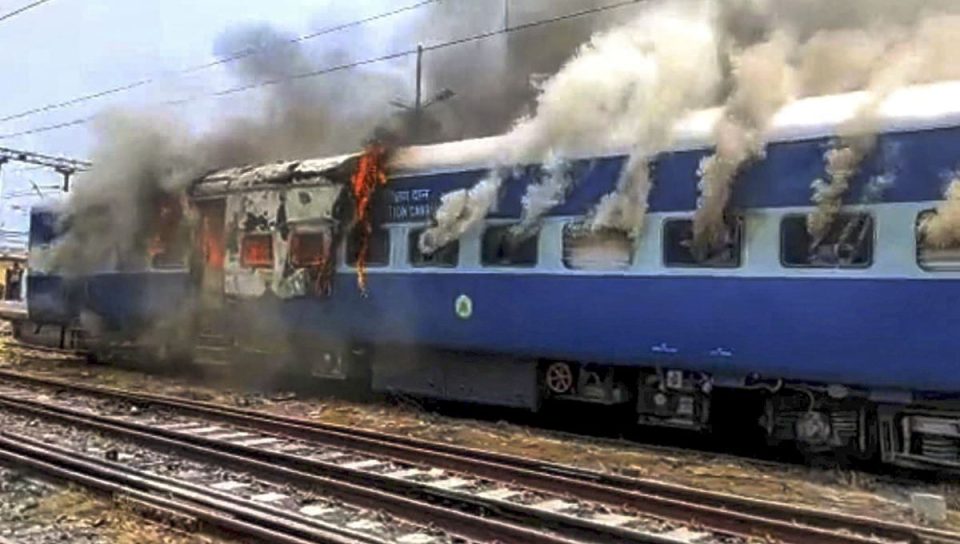
Railway assets safety: Centre to use RPF to edge out state police
Central security agency RPF is likely to take over crowd control and policing on railway premises from state-controlled GRP, which many officials accuse of negligence during Agnipath and CAA protests

The recent vandalisation of railway properties by youth protesting against the Agnipath scheme has given a handle to the Centre to further scale down the state police’s role in maintaining ‘public order’ in railway premises.
Railway assets worth about Rs 700 crore were damaged during countrywide protests over new recruitment norms in the three defence services.
In the light of the widespread vandalisation, the Centre has decided to gradually entrust the entire responsibility of controlling mob fury to its security agency, the Railway Protection Force (RPF), sources in at least two railway divisions told The Federal.
Railways a soft target
Since maintenance of public order and policing are state subjects as per the seventh schedule of the Constitution, the Government Railway Police (GRP), which is part of the state police, has been until now dealing with such mob violence in railway premises.
Also read: Aspirants resort to arson, violence in Bihar, Rajasthan
Top railway officials, however, had been complaining that the GRP often fails to discharge its duties in protecting railway properties, which have become soft targets of vandals. Railway properties withstood severe damage even during the nationwide anti-CAA protests due to the negligence of the state police, they said.
“According to internal assessments made by the Railways, in many states, the police remained silent spectators in the face of such mob fury,” claimed a senior RPF official attached with the Northeast Frontier Railway (NFR).
No coordination between RPF and GRP
He said that another hindrance in protecting railway assets is the lack of coordination between the RPF and the GRP, the two security agencies responsible for guarding the assets of Indian Railways. Considering these shortcomings, the Centre is contemplating complete withdrawal of the GRP from railway premises to do away with multiplicity of authorities, the official said.
He said the move has been in the cards since 2011, but considering opposition from state governments, its implementation was kept on hold.
Moreover, the RPF, being an armed force, is not fully trained in crowd control. To overcome this shortcoming, as part of a recent decision of the government, the central force for the first time will receive training in crowd control and public order management.
Training for crowd control
Accordingly, the first batch of 182 RPF personnel drawn from various zones, including the NFR and Eastern Railway (ER), was sent on July 5 to Meerut-based Academy for Public Order (RAPO) of the Rapid Action Force (RAF), a specialised force to deal with rioting and crowd controlling.
More RPF personnel will be given such training so that in future the force can solely handle mob violence of the kind witnessed during the agitation against Agnipath and CAA, said an ER official.
Also read: Railways abolished 72,000 jobs in 6 years; which posts went, and why?
Already, the RPF role has been extended to areas like controlling human trafficking, crime against women and general passengers and other such policing duties by amending the RPF Act, 1957 and RP (UP) Act 1966.
The latest move to utilise its services in riot control will further undermine the state police’s statutory responsibility discharged through the GRP, of ensuring law and order in railway premises as well as on running trains.


